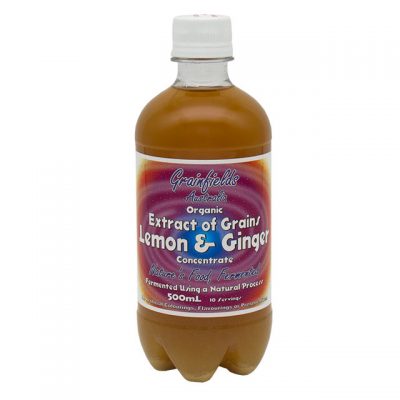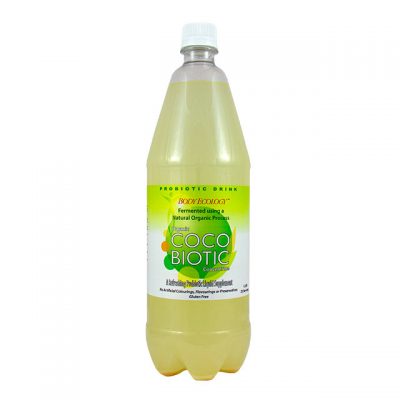Recent public releases on Lactobacillus would have us believe that powders and capsules are the only forms which have any health benefit. A review of the current literature on this subject does not support this….
It is interesting over recent years to look at studies on the many different forms of Lactobacillus bacteria and see what products scientists, particularly those in Northern Europe, are testing and developing. The key feature is that these products retain all the health benefits associated with the Lactobacillus strains but are available in common food products. Information from some sources has been suggesting that capsules with special coatings are necessary to avoid destroying the bacteria in the acid environment of the stomach. Certainly, one of the main functions of the stomach is to destroy foreign bacteria from entering the lower areas like the intestines. However, some strains of Lactobacillus are more acid-resistant than others. These acid-tolerant strains are more viable in the digestive tract than others.
Also, when the Lactobacillus strains are in high enough amounts (counts of 1 x 107 – 1 x 1010 cfu/day), enough active bacteria seems to be able to pass the stomach to perform their various health functions. Current research from around the world supports this (1, 2, 3, 4, 5). Most clinical studies are showing that Lactobacillus strains administered through natural food products (in milk and whey drinks as well as cultured powders) are achieving their benefits. These products are not specially capsulated and are delivered the same way Metchnikoff, a fervent advocator of the health benefits of bulgaricus, would have found the Bulgarians consuming their fermented foods.
Other studies over recent years have also shown that many strains of Lactobacillus are available and can live in the human intestine. Some sources have us believing that their particular strain is the only culture which can remain active in the gut. Again, reviewing current literature suggests that many strains may not only live with bile acids, but these strong bacteria appear to be able to establish their own population in the intestine and decrease the population of undesirable bacteria. Studies suggest that unless the Lactobacillus strain can achieve all these changes, it will be less likely to induce the health benefits stated.
A major point to understand is that nature was delivering these bacteria to the system very successfully before the technical developments of recent years. Logic will tell you this. Lactobacilli and fermented foods have been around for many years and are still a very effective way of receiving a helpful supply of good bacteria. In its present form, research has a long way to go to elucidate all factors associated with the prolonging of good health. Metchnikoff proposed the theory that passive or biodesirable bacteria appear to stimulate some of the factors necessary for longevity. Since that time, investigation of groups such as the traditional Georgians, Hunzas and Bulgarians plus other strong cultures, have commonly indicated that fermented foods have a high priority. Those which are presently available are not the extremely active foods used by the health populations mentioned above. The time has come for people seriously concerned about prolonged good health to make foods containing active passive bacteria a regular part of their diet. Fermented foods have a safe track record over thousands of years of our history. Through our development of modern diet we have once again lost one of the basic foods nature supplied. The secrets of prolonged health are difficult to find. The benefits of fermented foods are staring us in the face.
In summary, the Lactobacillus strain should:
- be in high enough counts and more acid-tolerant to pass through the stomach. (Specially-coated capsules are not needed for this process.)
- maintain its high and active count through processing and storage until consumption. (Test by adding 100 mL or 1 gram of powder to 250mL milk and keep it at 36° for 24 hours. If activity is good, a yoghurt will be produced. If activity is low, slightly soured milk will remain.)
- be tolerant of bile salts (survive in the presence of bile).
- be capable of increasing its numbers in the bowel and decrease the numbers of competing bacteria.
Live or Dead Cells – Is there a Difference?
Most fermented foods purchased off the shelves contain a significant amount of dead cells, because the foods are pasteurised at the last stage of production before delivery. The reason that these foods taste the same as a product containing active bacteria is because all the acids and other flavoring agents are still present after pasteurisation. However, although they taste the same, these are not the same active cultured foods consumed by the famous longevity groups of the world. It is believed the life-span in the human body of these cells is between 3 to 10 days. Regular consumption of bacteria is needed to replace what is lost through normal body functioning.
References
- Saxalin. M.; Elo S.; Salimen. S.; Vapaataloh. H. Dose response colonization of faeces after oral administration of Lactobacillus casei strain GC., Microbial Ecology in Health and Disease (1991) 4(2) 209-214.
- Lidbeck. A.; Allinger. V.G.; Orrgafic. K. M.; Ottava. L.; Brismar. B.; Gustafsson. J. A.; Rafter. J. J.; Nord. C. E.; Impact of Lactobacillus acidophilus supplements of the faecal microflora and soluble faecal bile acids in colon cancer patients. Microbial Ecology in Health and Disease (1991) 4(2) 81-88.
- Perdigon. G.; et al. Behaviour of natural and heated yoghurt in the immune system and the preventative capacity of enteric infections. Mitchwissener (1991)46(7) 411-416
- Isolauri. E.; et al. A human lactobacillus strain Lactobacillus casei sp strain GG) promotes recovery from acute diarrhoea in children. Pediatrics (1991) 88(1) 90-07.
- Gonzales. S.; et al. Prevention of infantile diarrhoea by fermented milk . Microbiology Ailments. Nutrition (1990) 349-354.
- Yoghurt. William Helerich & Dennis Westhoff. Published by Prentice Hall, a Spectrum book.
- Lactobacillus Feeding Alters Human Colonic Bacterial Activities. Nutritional Reviews, Vol. 42 No. 4, Nov. 1984.
- Lactobacillus acidophilus. American Institute of Biosocial Research Inc. 1989
- Assimilation of Cholesterol by Lactobacillus acidophilus. Applied and Environmental Microbiology, Vol. 49. No. 2, Feb. 1995




